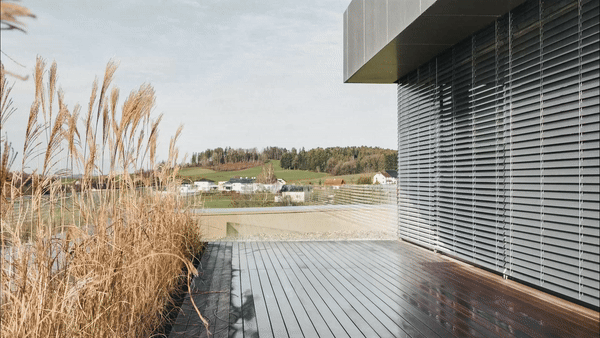

Planning an Electrical Installation
Reading Time
Date
6 minutes
14. October 2024
A house wiring project is much more complex today than it was when our parents or grandparents built their homes. We need to plan carefully and consider not only our current needs but also what requirements we might have in the future. What should we watch out for, and what should we not underestimate?
“A socket here and here, a chandelier there, two light bulbs in the hallway…”
Once the cables are hidden behind the walls, making future adjustments is nearly impossible without major renovations.

Here are some tips to consider when designing your wiring, ensuring that your dream modern home doesn’t end up with outdated electrical systems.
1) Audio as a Fixed Part of Home Comfort
High-quality home sound systems are no longer just for audiophiles; background music in every room has become a standard feature in modern homes. It’s not just about whether sound will be present, but how comfortable it is, what capabilities it offers, and how well it blends with your decor. If you plan for an audio system from the beginning, it’s easy to integrate it into your wiring project. For instance, you can choose popular options like recessed ceiling speakers, eliminating concerns about speaker placement, running cables, and keeping them dust-free.

Is your budget tight right now, and does audio have to wait? That doesn’t mean you have to give up on the possibility of a multi-room system in the future. Just carefully consider which rooms make sense for the sound system, their sizes, and prepare the necessary wiring. You can easily run the cables to the speakers when the time comes. For a room up to 15 m², one ceiling speaker will suffice. In a room up to 20 m², you can add a second speaker. For rooms between 20-40 m², you’ll definitely need two speakers, and for spaces larger than 40 m², be prepared to install four speakers.
2) Air Conditioning: Straight Away or Afterwards?
With summer temperatures breaking records recently, air conditioning has become a common feature in new homes to combat the unbearable heat. You can either integrate the HVAC system into the home from the beginning or use conventional wall-mounted cooling units.
While it’s possible to add these units later, it’s best to plan for them in advance when designing the wiring. Otherwise, you’ll have to cut a wide groove in the wall for both the cable and the plastic pipe for condensate drainage. Alternatively, you can conceal it in the molding, but that might look out of place in a refined interior.

3) The Garden Cable Is a Must-Have

4) How To Do The Wiring for Shielding

5) Electric Car Charger? Better Be Prepared


6) Design Your Electrical System to Get The Most Out of PV
Almost everyone building today is at least considering the idea of installing a photovoltaic system. Europe has seen a boom in residential photovoltaics in recent years, as people seek savings and greater independence from the grid amid rising energy prices.


7) Have Enough Space in The Cabinet

Final Tip: Window Contacts in Fittings
Small but smart, window contacts can help automate many features in your home. For instance, modern houses equipped with an intelligent control system (like the Miniserver mentioned earlier) can automatically disable the heating if a window has been open for too long, preventing heat loss in winter. The same principle applies in summer, helping to optimize air conditioning use. Additionally, the shading system knows when a window is open, so the blinds won’t lower. Finally, window contacts also serve an important safety feature.

Loxone: Smart Wiring Project Right From The Start

Interested?
If you have any questions, contact us or become a partner in under two minutes by registering directly - all by yourself!
Do you have any questions?
Feel free to contact us. Our expert advisors will be more than happy to help!
Become a Loxone Partner
Become a Loxone Partner in just 2 minutes - without any risk or hidden costs!